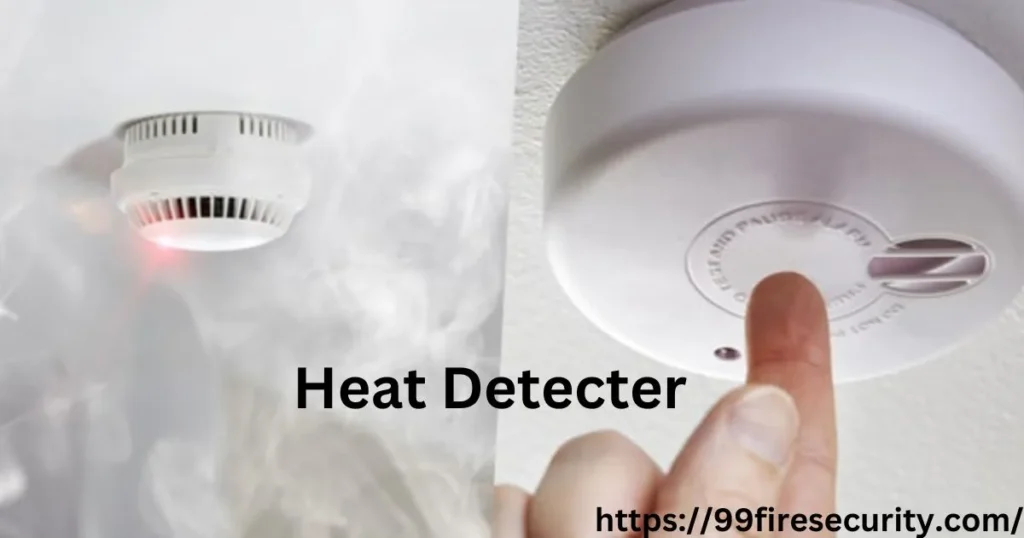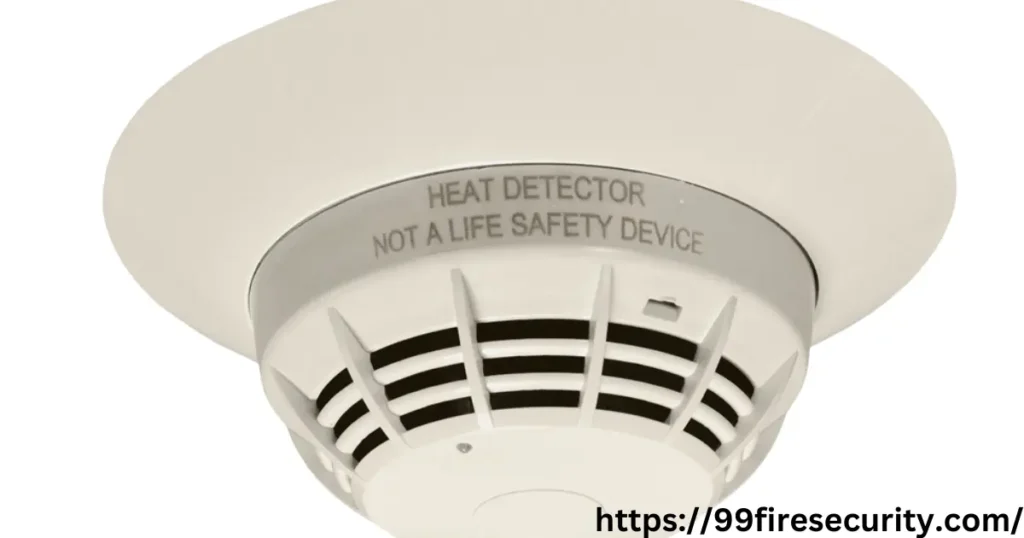Fire alarm systems are essential in preventing loss of life and structure from the catastrophic effects of fire. The buildings safety is of utmost priority in such situation and protecting against possible fire outbreaks and this kind of systems gives that first line of defence through early detection which enables response to potential fire. Fires can spiral out of control in seconds so the sooner they can be detected, the less damage and loss they cause.
The system, which features smoke detectors, heat detectors, and an alarm, is designed to alert occupants and the fire brigade before a fire can take hold. A dependable fire detection system can be a lifesaver in an emergency in a residential home, an office building or even an industrial site.
As the awareness of fire safety and prevention has increased, the usage of alarms has also been on the rise, smoke detectors being the most commonly used but systems such as heat and smoke detection systems are also growing in popularity. With early detection, full-spectrum protection, and better protection against multiple fire types.

Types of Fire Alarm Systems
Each sort of Fire alarm systems collectively with their structure works, helps in really choosing the most fitting/preferred framework for the climate. The primary types include:
Fire alarm systems
Traditional systems divide a building up into zones, with detectors in each zone connected to a control panel in the central part of the building. With only a single detector per room, and with the detector only able to know that smoke or heat is in a particular zone, the system has no way of telling which device woke up, so it’s ideal for smaller structures.
Integrated Fire Alarm Systems
In addressable systems, each detector is assigned a unique address, allowing us to obtain much more detailed information. This arrangement can pinpoint the precise location of a fire instantly and reduce response time. Typically used for larger buildings, this type is smart and more accurate.
Wireless Fire Alarm Systems
In contrast, wireless fire alarm systems utilize radio signals to communicate between detectors and the control, eliminating the need for extensive wiring. They are especially suitable for buildings that are hard to retrofit with wires or where doing so would be too expensive.
How Does a Smoke & Heat Detector Work
Fire alarm systems are built on smoke and heat detectors, each detector designed for a particular fire trigger.
Smoke Detectors
There are two types of smoke detectors:
- Photoelectric Detectors – These use a light beam to detect visible smoke particles. Smoke coming into the chamber scatters the light and sets off the alarm. Perfect for locating low fire combustion.
- Ionization Detectors – These use ionized air to detect smoke. As smoke enters the chamber, it disrupts the ions’ flow, activating the alarm. Fast-flaming fires are detected better with ionization detectors.
Heat Detectors
There are different types of heat detection which responds to temperature changes as discussed below:
- Fixed Temperature Detectors – These sensors are set to activate when the surrounding temperature reaches a set threshold, usually around 135 °F (57 °C).
- Rate-of-Rise Detectors – Respond to a rapid increase in temperature independent of a threshold being met.
Existing Framework Attracting Renewal?
These systems detect smoke or heat in the early stages and deliver precious additional minutes to escape the area and reduce potential fire damage.
Minimizing Property Damage
Detecting fire sooner and sounding alarms can reduce the spread of fire and, thus, help protect buildings and valuable property and assets.
Enhancing Occupant Safety
Best Fire alarms sound to keep those within a building safe by warning them of potential threats, guiding them to egress and minimizing injury and death.
The components of the fire alarm system
The fire alarm system consists of several basic components that cooperate with each other in the following way:
- Control Panel – This is the brain of the system,monitoring detector signals, controlling alarms.
- Smoke Detectors – Devices that sense smoke and trigger alarms.
- Heat Detectors – Activated by increasing temperatures.
- Sounders and Alarms — Audible devices to notify occupants to evacuate.
- Manual Call Points — This gives occupants the ability to activate the alarm manually in emergency situations.
Installation & Setup of Fire Alarm Systems
Nothing is more vital than the proper installation of a fire alarm system so that it works as it should. A system that’s poorly set up can ise false alarms — or, worse still, fail the chips are down. For maximum protection, professional planning and setup is necessary maximising data safety.
Things to Keep in Mind While Planning and Designing
The design process starts with analyzing that layout of the building and identifying potential high-risk areas like kitchens, electrical rooms and storage areas. Zoning is vital for larger buildings, where components can be segregated and monitored independently. It localizes the origin of the fire quickly, which shortens response time.

Zoning and Coverage Areas
Covering the space so that there is maximum coverage and minimum overlap and redundancy is critical with smoke and heat detectors. In residences, you should have detectors in each bedroom, outside each sleeping area and on every level of the home. They’re installed in the hallways, in stairwells, in the mechanical rooms in commercial buildings.
Professional or DIY UI installation
While DIY systems are available for small residential properties, larger or commercial products require a professional installation. This ensures the system meets national fire safety codes and is functioning at optimum levels. They also connect the system to other life-safety systems, such as sprinkler systems and emergency lighting
FIRE CODE FIRE ALARM SYSTEMS MAINTENANCE
Every fire alarm system needs regular inspection to stay operational. It either won’t go off, when there is a fire, or it will misfire.”
Routine Maintenance Work
Routine inspections involve cleaning the detectors, ensuring that batteries are fully charged and examining wiring and control panels for damage. Detectors can fail when dust, dirt or even insects block them.
Testing Procedures
Fire alarm systems need to be inspected monthly or as per manufacturers guidelines. Testing smoke detectors with test smoke or heat simulators accomplishes this. A system wide test including sounders and control panels should be carried out by professionals twice in the year.
Replacing Faulty Components
Detectors last approximately 8 to 10 years. And should be replaced after this time, even if they appear to function. Replace smoke detector batteries once a year; test rechargeable batteries monthly.
Fire Alarm System Regulations and Standards
Fire Alarm Systems are subject to strict regulation by standards to ensure they work when needed.
Adherence to local authority policies
Property owners must stay informed about and comply with local fire department and building codes requirements, and their changes (stay on top of the changes). However noncompliance can result in fines or legal liability.
WTO Consulting Services — Certifying and Approving Process
On the other hand, certified systems are tested and approved by governing authorities. So UL and FM Certifications means the system has been tested and found to meet the standards of the industry.
Integration With Other Building Systems
Traditional fire alarm can connect with another control system but not all system support but go for modern fire alarm system which preferably support this and can be very helpful in terms of safety and automated automatic building management.
Into the Security Systems
Fire alarm systems might in turn interface with security systems to automatically disable the opening of access doors to exits, as well as elevator access in the event of a fire emergency. This extends the alignment for emergency response and safe evacuation.
Their emergency lighting and exit signs
Sprinkler systems put out fires or slow their spread until the firefighters show up, and fire alarms activate emergency lighting and illuminated exit signs that guide people to safety, including through smoke-filled areas. This is especially critical in big buildings or underground spaces.
Automated Alert Systems
Some alarm systems can automatically alert emergency services and building managers so that fire departments can respond faster and the fire can be controlled sooner.
Fire Alarm Systems Were in Trouble!
Fire Alarm systems can provide a lot of benefits but can also have issues that facing the challenges need a solution in advance.
Locating the Detector and Adjusting Sensitivity
With properly placed and calibrated detectors, the chances that a true signal or noise is missed, or generates false alarms, are minimized. On the other hand, addressable fire alarm systems allow for different areas of the building to be programmed for sensitivity.
System Failures
To troubleshoot the malfunction of these features and utilities, and regular diagnostics and updates software are used. Some modern systems are self-diagnosing, notifying property owners of faults before a full-on failure is able to take place.
Fire Alarm System Cost Questions
In summary, the expense of installing and maintaining a fire alarm system varies significantly depending on the building’s size, system complexity, and specific needs.

Initial Setup Costs
This cost will include the cost of the detectors, control panels, cabling and sounders. Two zone and complex or high-rise building installations have higher installation fees. Residential systems cost between $500 and $2,500; commercial systems can cost $10,000 or more.
Ongoing Maintenance and Improvements
The ongoing cost of ownership includes routine maintenance, including hardware and software upgrades. Service contracts often include testing, repairs and replacing components, which keep the system running.
Cost-Benefit Analysis
In the beginning, the cost may seem quite demanding but the savings you earn from protecting the property and the savings you could make with your potential insurance premiums certainly equalise the price of an alarm system over time! Less fire related damage also equals less time lost for businesses.
Fire Alarm System — Technologies & New Trends
This has led to systems for detecting and preventing fire being managed more sophisticatedly and the development of new technologies, catered for larger and more complicated projects.
Smart Fire Alarm Systems
Smart systems all have apps available for smartphones that allow for remote monitoring and control. And even when the building is vacant, these systems provide real-time alerts that allow property owners to rest easy.
IoT and Remote Monitoring
The IoT (Internet of Things) devices enable multi-sensor fire alarm systems that employ data analytics and predictive maintenance, to ensure that faults do not result in failure.
Advanced Detection Algorithms
Having new algorithms is helping with precision in detecting fires, determining when smoke or heat really indicates a fire as opposed to some other benign source, which improves and reduces false alarms even more.
Fire Alarm System Design Dope
Studies reveal that a quality fire alarm system works to combine smoke and heat detection, integrate with a sprinkler system, and remain routinely tested/serviced. With Professionally installed high-quality components, there is little room for parts to wear out or fail.
Conclusion and Final Thoughts
Smoke and heat detectors are the most effective fire alarm systems to protect lives, property and businesses. Immediate recognition, rapid speed of response and plan engagement, along with matching it to safety plans ensure a strong balance to fire risk that reduces damage and loss.
With the advancement in technologies, fire alarm systems are not only getting smarter and more efficient, but it is also becoming easier to handle. It is good to invest in a complete fire detection system if it is for personal use or for business use to keep those people in vulnerable conditions and valuable possessions safe.
FAQs
How often should we test the fire alarm systems?
Fire alarm systems should be tested at least once per calendar month to make sure everything is working properly. Professional checks of the whole unit should be performed every six months.
The difference between smoke and heat detectors
It detects smoke particles to warn you early of a fire. Heat detectors are triggered by changes in temperature and are more useful in places where smoke detectors may give false alarms, such as kitchens.
Are fire alarm systems operable when the power goes out?
Yes, almost all fire alarm systems have backup batteries that keep the system up and running during a power outage. To ensure these batteries are working, routine testing of them is critical.
But how to avoid the false alarms in the fire detection system?
To minimize false alarms, do not install smoke detectors near kitchens, bathrooms, or areas that are more likely to accumulate dust and steam. Calibration updates, along with regular cleaning, help limit false activations too.
Do residential buildings have to install fire alarm systems?
Bylaws and regulations on fire alarm systems in residential buildingsIn a lot of regions, it is mandatory to install fire alarm systems in residential buildings, particularly in a new construction. Often, interconnected smoke detectors are required in every bedroom, hallway and living area.


